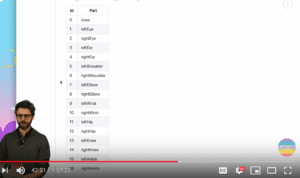Reading Response:
” There are many other games just like this that are making innovative composites that focus on gameplay rather than flashy presentation.”
I was really touched when I was reading the part about the history of indie games and it’s also interesting to think about the roles that both AAA game companies and indie games companies play in the long river of game history. The big game companies, or “commercial game companies” as the article indicated, are the ones who have brought games to a larger stage and more players: those games are well-designed to suit the interest of the public because the company needs to make sure that the game is profitable. However, the indie game companies are more innovative: they usually examine a concept and the indie games are more experimental and creative than commercial games. I can conclude it in this way: the characters or the storyline of the commercial games are designed based on the form of the game. Usually, the design team will search for the most popular types of games and then add other elements, thus the commercial games, nowadays, are very similar to one another and it’s losing originality. However, the indie games are more based on a story the designer wants to tell, or a concept the designer wants to experiment on, and the form of the game are just a method to achieve their goals.
Although it seems like indie game companies are the creator of new concepts, we can not just neglect the influence of those big game companies as well. One problem a lot of indie game companies are facing is profit, and designing a good game is expensive. if the games they create are not very popular or not well-known by the public, the company will probably lose the investment. On the contrast, the big game companies are better choices for investors because the profit is more stable(they have bigger popularity and more products). Therefore, it’s not hard to predict that a lot of indie game lovers were drawn to the game industry by big game companies.
I’m not saying that exposure is a bad thing for indie game companies – I’d love that good games can have a larger market and have larger fan groups! However, will indie game companies lose their initial resolution in front of the temptation of profits? Will they be acquired by those large game companies? These questions need more time for examination.
Playing Review:
I have played all of the three platforming games and therefore I’d like to write a long review to compare all of them together.
Celeste & Ori & Hollow Knight:
Difficulty Ranking: Celeste > Hollow Knight > Ori
These three games are all very famous platforming games. However, there are still some differences between them, besides the game difficulty. Celeste, in my point of view, is more about jumping and speed. I know you might think what I said is nonsense because Celeste is a platform game after all. However, what I mean is that the gameplay of Celeste is so strong that it almost makes me neglect the storyline of the game. Celeste also gives me a “super Mario” feeling, although the difficulty of these two games is not on the same level: my purpose when I started playing it is to pass games and defeat all levels, and the fun of this game is just to jump! Jump to the next platform, jump to the next map. However, Hollow Knight, also a quite difficult platforming game, gives me a completely different feeling. In my point of view, Hollow Knight is a soul-like(魂类) game in terms of the game rules and the background story, which means: when I was playing this game, jumping and beating the boss/monsters is just a method to read the stories and the get to know the world setting(世界观设定). I started to play this game last year, and I haven’t passed the game yet, not because I don’t have time or it’s too difficult, but because I don’t want the story to end. I have collected all items and defeated all of the bosses except the last one. Why? because I feel so sad to see and so reluctant the end of that world. The story is too attractive and it feels so true.
Now, let’s talk about Ori. I don’t want to compare Ori with the other two games, because I think Ori is a fairytale to me, which contains excitement, adventure, challenges, and tears. The music and the visual styles of Ori are a great help to help the player have that fairytale feeling, From my perspective, the magical thing about Ori is that, if you compare the gameplay or the storyline of Ori to other famous platforming games, they are definitely not the best, but the combination of them makes this game so unique to experience and it has an attraction to make the player feel like Ori is themselves, not just a character.
